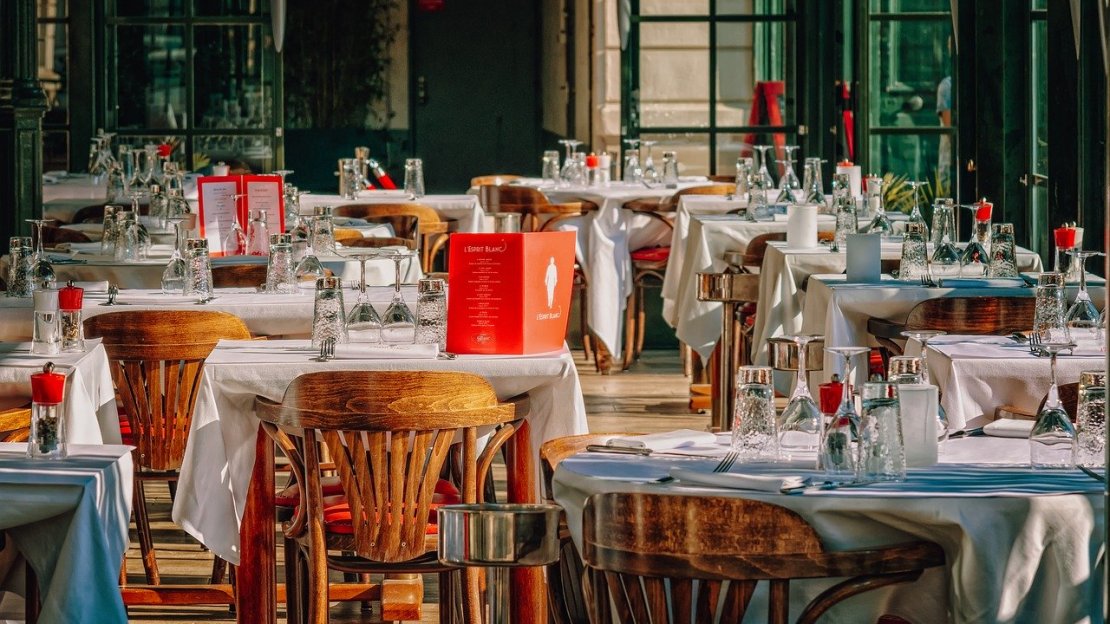John Tolley, April 25, 2020
Shared meals anchor many happy memories; a backyard BBQ, a holiday feast, or a table at your favorite restaurant. That last one may resonate more palpably in our current state of quarantine and lockdown.
Restaurants - as well as bars and hotels - across the nation shuttered or now operate on a takeout-only basis. And while myriad aspects of our daily lives are currently uprooted, the lack of our shared community tables is a touchstone for the isolation the great majority of us are experiencing.
?Restaurants are a gateway to our getaway,? says Ajai Ammachathram, assistant professor and extension specialist in the Department of Nutrition and Health Sciences at the University of Nebraska College of Education and Human Sciences.
Ammachathram is an expert in the hospitality industry with years of food and beverage management experience. We recently corresponded with him regarding a range of issues surrounding restaurants in the face of a pandemic. The devastation is profound and plain-to-be-seen, but Ammachathram remains hopeful that resiliency coupled with creative-thinking will help our favorite eateries bounce back.
(This interview was edited for clarity and length. In addition, the terms FOH and BOH are used in reference to restaurant workers. FOH, or front-of-house, is an industry term denoting customer-facing employees such as servers, bartenders and hosts. BOH, or back-of-house, refers to the kitchen?s staff of chefs, line cooks, prep cooks and dishwashers.)
Why is this pandemic and the resultant quarantine so devastating for restaurants?
Lack of consumer confidence and, in many cases, lack of disposable income are the major contributing factors to this devastation. There is no evidence that COVID-19 spreads through food, but customers are still worried of the physical contact when purchasing from restaurants
We see restaurants quickly pivoting to takeout and/or delivery. How well can this soften the blow?
With low-consumer confidence in the industry (at the moment), it?s a drop in the bucket for most restaurants. As the slogan goes, ?constantly stay visible to the customer.? At the most, delivery and take-outs are helping restaurants to keep their lights on.

Is there any safety net for FOH restaurant workers who largely draw their wages from tips?
Unfortunately, the government aid packages are the only insurance safety net at this point. Europe and other countries will do better where restaurant employees don?t rely on tips and service charges - unfortunately, it?s not the case here.
Let?s hope the industry witnesses more long-term fix in employee wages and benefits (health/life insurance, paid vacation, balanced work hours etc.)
Given that some restaurants have gone to takeout and delivery and still need BOH staff, has there been a disparity between job loss or wage loss between FOH and BOH employees?
In order to survive, restaurants have to do what?s right for the business. With ?ZERO? dine-in at the moment, FOH employees will take the biggest brunt in this fire. On the other hand, if an employee is flexible and multi-talented, they are in demand. Efficient long-term staff who are flexible might survive the storm better than the new ones.
Employees needs to be retrained post-COVID-19 era to accommodate to the new needs of the business.
We?ve heard many suggestions for supporting local restaurants, such as ordering more takeout food and/or buying gift certificates. Has there been indication that any one is better or worse than another?
Tipping big, buying gift cards, ordering take-out and delivery are many ways customers can show their support. Quite honestly, every bit counts!!!
At the end of the day, customer support matters. Industry is on its knees, all of these are just a band-aid to a bigger ailment, but something is better than nothing.
What is a return to normalcy going to look like for restaurants?
?Time heals everything? - the restaurant industry is a resilient industry; customers will start coming back slowly and cautiously.
From the industry perspective, normalcy will lead to elevated cleaning, sanitizing and disinfecting standards - the key message here is educating the customer on the new and elevated standards. Many chains have already started marketing on their new standards to the consumers. In the long run, the costs associated with these measures could be transferred to the consumers.
Buffet lines are the ?hugs and hand-shakes? of the restaurant industry. I wouldn?t be surprised if health departments mandate the first item/dish in the buffet line to be hand sanitizer.
Another trend is that more and more consumers are getting used to delivery apps and contactless pick-ups. Tracking rewards, points and promotions are an added benefit with these apps - take outs and delivery might play a bigger part in restaurant business - that will be the new reality.
Once we have returned to our new normal, how can people best support their local restaurants? Is it just spending more than usual at those places, or is there more folks can be doing?
Restaurants are hurting, so is the customer!!! Spending more in restaurants is perfect, but the immediate question is - can they afford to?
From the restaurant?s point of view, reassuring the customer is the need of the hour. Customer confidence and support will be the immediate target compared to profits. Most marketing efforts will be ramped up followed by tons of promotions and education to customers on new standards.
At the end of the day, restaurants are engrained in our lives – from celebrating birthdays to funeral and everything in between, we rely on restaurants to join the journey. Support for the rebuilding efforts will be the overarching message.
Recovery is the key. Consumer confidence and support will be back, but it might be a while before restaurants see any money. This was a silent tsunami for the industry - whenever and wherever the restaurants start the rebuilding efforts, it is advisable to keep it simple!!! Restructuring the menu, operations and personnel might be necessary in most cases - maybe come-up with covid-19 proof menus!







